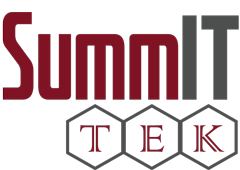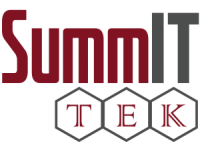In one of our latest blogs, we spoke of Intellectual Property Rights and how we need to shift focus and retool our compliance strategy. This blog will focus on supply chain security and how that affects your profit margin, and how we can use updated trade regulations to refocus our just-in-time deliveries and third-party seller/buyer, exporter/importer relationships to maximize profits. This is timely, especially given this Administration’s efforts to “level the playing field” for our imported goods.
With our current efforts to even the playing field, which media refers to as a “trade war” with China, now is the time to take a step back and refresh and re-evaluate your company’s supply chain and overseas manufacturing relationships.
Continuing reading here: http://summit.freedomoutdoors.com; /blog/
Larger corporations may be able to withstand any short and medium-term “trade adjustment” negotiations with China. However, mid-sized and especially smaller companies need to know how these trends will impact their overseas manufacturing, and how tariffs will affect their importation with their exporters and brokers. This is especially true for Third Party Logistic (3PL) companies and other businesses that already pay a very high percentage to online retail giants like Amazon, Rakuten, JET or Walmart, to have their goods imported, advertised and sold on these virtual marketplaces. Imagine tariffs increasing and import regulations tightening: these costs will be passed on to the 3PL and businesses utilizing these online retail giants.
Many businesses are not familiar with the Trade Facilitation and Trade Enforcement Act of 2015. Under this Act, there is a provision increasing the de minis value for importation entry to $800.00 USD (19USC 1321). This was a result of the meeting of the Commerce Working Group, which addresses opportunities and challenges related to this Act. These recommendations are intended to improve the import process from a facilitation and enforcement perspective for Section 321 eligible shipments across all modes of transportation. This method of importation is often under-utilized by small businesses, both domestic and overseas. With today’s just-in-time deliveries and virtual warehouses, understanding and working with a company with the knowledge and expertise of how this process works is key to maintaining a red line and higher profit margin. In other words, there are alternatives to Amazon and the other online retailers, which charge high rates to get your goods to your customers.
Some businesses are still not familiar with U.S. Customs and Border Protection’s (CBP) Container Security Initiative (CSI) and Customs-Trade Partnership Against Terrorism (C-TPAT). Both programs were part of CBP’s five pillars of security set in place after September 11 which included a risk-based automated targeting system and creating a National Targeting Center. Many of our foreign trading partners, to include China, have implemented a similar C-TPAT-type program called the Authorized Export Operator (AEO). The U.S. and foreign partners have agreed to mutually recognize both programs and accept their standards as equivalent. These programs were implemented and designed to increase supply chain security against transnational crime and terror attack. CSI is a very robust program now, with many signed agreements with foreign countries that allow CBP Inspectors to examine outbound cargo destined for U.S. Ports of Entry. C-TPAT, however, is not as encompassing as originally envisioned. C-TPAT requires physical inspections and validation of manufacturing, storage and logistics facilities overseas. Supply chain processes are evaluated for risk, and recommendations made for corrections, in order to obtain C-TPAT certification that will expedite entry into the U.S. This sounds simple, right? However, the program requires the approval of our foreign government partners, and China has still not fully signed on to the C-TPAT initiative. That means CBP officers must seek case-by-case approvals from the Chinese Government to allow them to do the necessary inspections overseas. This process has proven to be “hit-or-miss,” with the Chinese Government approving some requests but not others.
Many companies have sought assistance from private contractors to conduct C-TPAT certifications in China to meet CBP standards and be recognized for certification. This, however, has pitfalls, as many companies who advertise their C-TPAT knowledge in fact may not be qualified to conduct these inspections overseas. These companies may not conduct a proper risk assessment and may not provide proper written documentation to CBP for certification. Utilizing an unqualified contractor may ultimately cost your company a good deal of time and money.
But, routing your importations through a CSI port of exportation and having a C-TPAT certification would definitely help your cargo receive expedited entry to the U.S.
In sum, there are many supply chain solutions out there, the challenge is aligning them with your company’s logistical needs. We know many companies may not have a secure trade solution. Others have in-house experts. No matter your company’s experience, it’s always good to have a fresh, outside assessment performed to evaluate your current program. You can then easily validate its effectiveness, or make adjustments as necessary to improve efficiency and protect your brand from fines and lawsuits.
So, do your due diligence when selecting a company to assist with your supply chain program.
#Summit-Tek can help.


